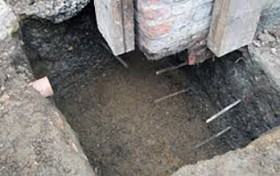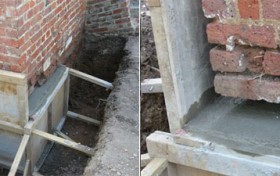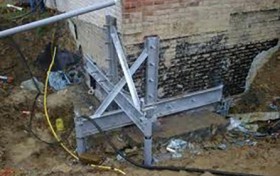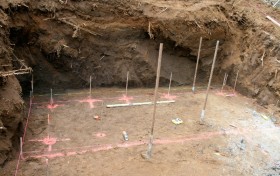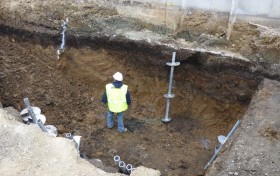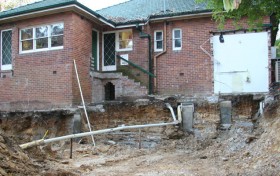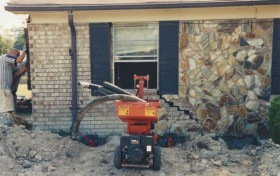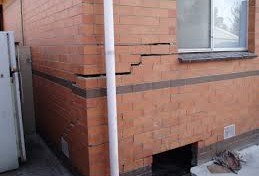Conventional Concrete Pit Underpinning
Conventional Concrete Pit underpinning is accomplished from small, wood sheeted pits constructed beneath the foundation. Following excavation to the desired level, the pit is filled with concrete to within several inches of the foundation underside. Load transfer is accomplished by dry-packing the gap with stiff mortar.
Engineers can choose from a number of underpinning techniques during the design phase of the project. Nevertheless, there are circumstances – such as when new construction abuts tight against an existing building – where the Conventional Concrete Pit underpinning method is often the best or only viable option.
Micro Piles
Micro Piles can be utilised also for underpinning. They would typically be installed immediately adjacent to the structure to be supported. A pile cap or temporary bracket may be mounted to the underside of the footing and may be used to transfer the load to the Micro Pile.
Bracket Piles – Bracket piles are typically used in conjunction with earth retention work to support and / or stabilise existing functions adjacent to a proposed excavation. The new piles are installed in pre-drilled holes alongside the exposed wall or column footings. A bracket is mounted to the underside of the footing and attached perpendicular to the new pile to transfer the load below excavation subgrade.
Helical Piles (Screw Piers)
Helical Piles – Helical piles are structural underpinning elements primarily used for foundation settlement control. The piles are hydraulically screwed in the ground until the required resistance is reached to achieve pile capacity, and attached by means of a bracket to the adjacent distressed footing.





